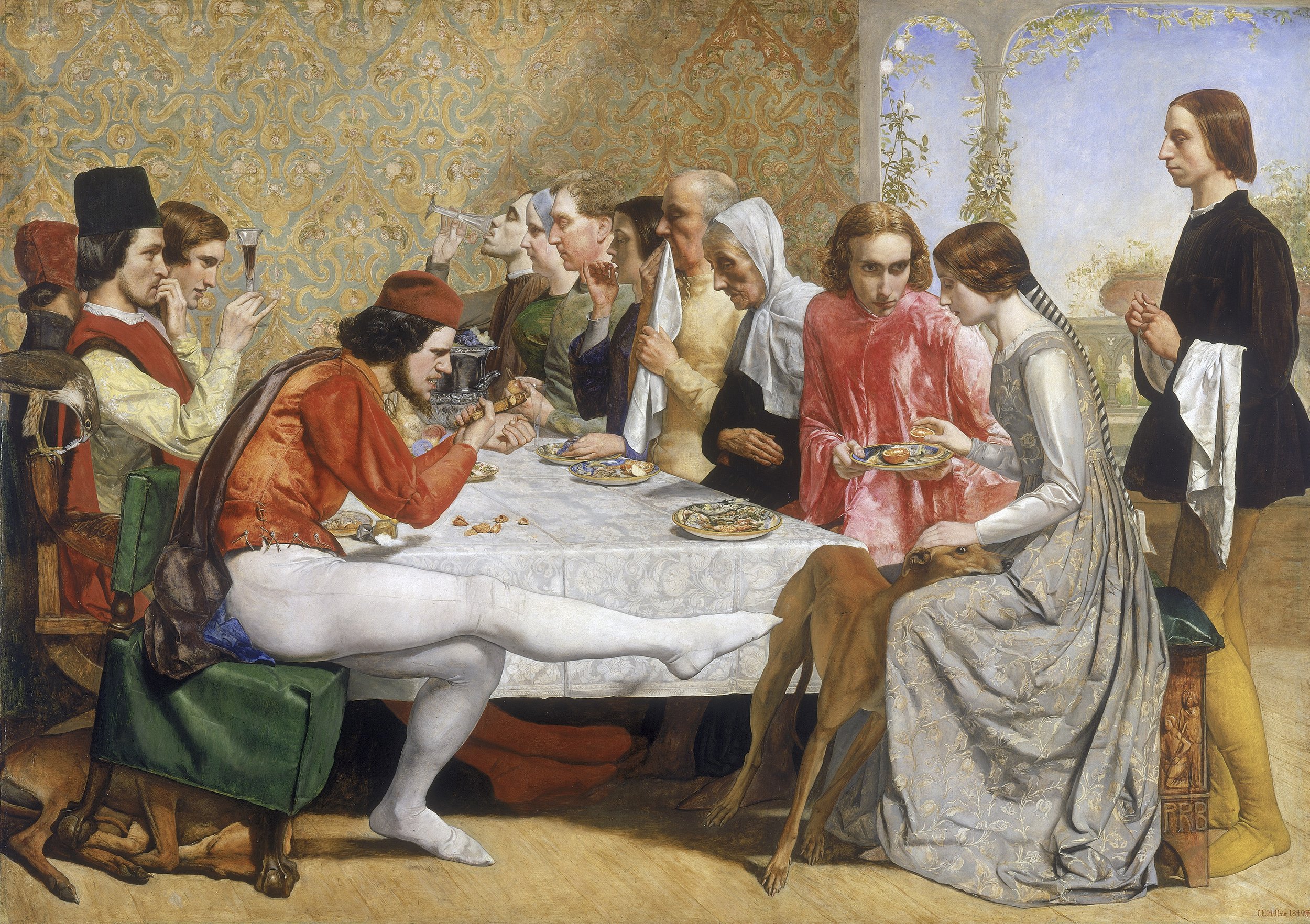Lorenzo and Isabella by John Everett Millais, 1849.
This work illustrates John Keats poem Isabella, whose work the Pre Raphaelite Brotherhood much admired.
Your Custom Text Here

Lorenzo and Isabella by John Everett Millais, 1849.
This work illustrates John Keats poem Isabella, whose work the Pre Raphaelite Brotherhood much admired.

Spring (Apple Blossoms) by John Everett Millais.
Millais is one of the founding members of the 19th century British artist group known as the Pre-Raphaelite Brotherhood. He achieved the most fame of the group and eventually came to lead the Royal Academy he had rebelled against.

Peace Concluded, 1856 by John Everett Millais.
This scene marks the end of the Crimean War and the return home of the soldier to his family.
On the mother's lap, four animals from the toy Noah's Ark represent the four belligerents: Britain (lion), Russia (bear), the Ottoman Empire (turkey), and France (rooster).
The father holds the newspaper that announces the end of the war.
This post is in honor of all the fathers (and mothers) who sadly cannot celebrate with their families because they are still fighting a war.

Leisure Hours by John Everett Millais, The Detroit Institute of Arts.
Late in his career, Millais gave up the idealisim of his youth and the PRB and created very popular and sentimental pieces. He was also quite sought after as a portrait artist for his ability to create beautiful paintings around his subjects.

Mariana by John Everett Millais, Private Collection.
Mariana is the main character in a poem by Tennyson that deals with a woman "trapped" in her life. She is surrounded in a perfect Victorian setting by the dictates of the Arts & Crafts movement. The movement was a reaction to the increased industrialization of the world and sought to emulate a time when everything was created by hand.

Ophelia by John Everett Millais, 1851-2, The Tate Gallery, London
Millais’ painting of Ophelia done very early in his career is one of the finest works created by the short-lived Pre-Raphaelite Brotherhood and their movement. The legend of the candles, sickness and the model herself would become the PRB’s most often re-told tale. However, it pales in comparison to the work itself when it stopped me in my tracks at the National Gallery in London (on loan from the Tate at the time) and set me on a whole new path for my Master’s thesis.

The Poisoned Cup (aka "Carrying a Peacock") by John Dawson-Watson, 1869
Another artist discovered via Pinterest.
John Dawson-Watson was a British Impressionist whose early work seems very similar to John Everett Millais of the Pre-Raphaelite Brotherhood fame. The rich colors and attention to detail found in this work becomes looser and more pastel after he studies Impressionism at Monet's home in Giverny.